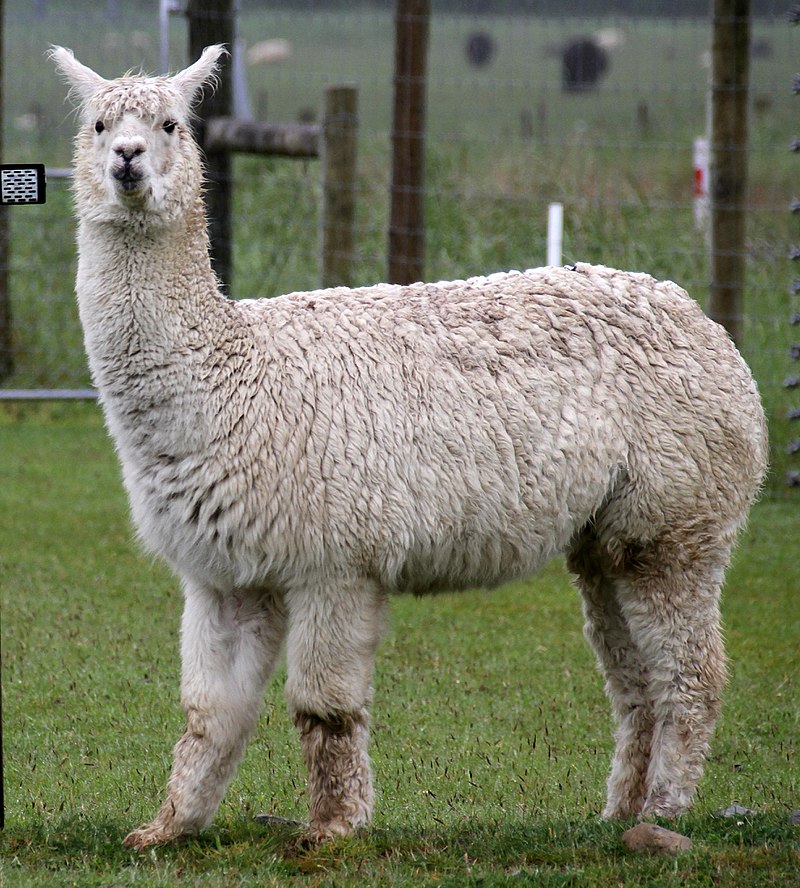Alpaca
Basic Information
Genetics and Reproduction
Alpacas can breed at any time but it is more difficult to breed in the winter. Most breed during autumn or late spring. The gestation period is, on an average, 11.5 months, and usually results in a single offspring, or cria. Twins are rare, occurring about once per 1000 deliveries.
Ecology and Habitats
They typically live in temperate conditions in the mountains with high altitudes.
Dietary Needs and Habits
They mainly need pasture grass, hay, or silage but some may also need supplemental energy and protein foods and they will also normally try to chew on almost anything. Alpacas can eat natural unfertilized grass; however, ranchers can also supplement grass with low-protein grass hay.
Additional Information
Social Structure
Alpacas are social herd animals that live in family groups, consisting of a territorial alpha male, females, and their young ones.
Domestication
Alpacas have been domesticated for thousands of years by Hauflins that live in the Aconcas mountains such as the Chaneque and Duende. There are no known wild alpacas, and its closest living relative, the vicuña are the wild ancestors of the alpaca, raised by these hauflins long ago.
Alpacas are considerably smaller than llamas, and unlike llamas, they were not bred to be working animals but were bred specifically for their fiber to be made into a fleece.
Uses, Products & Exploitation
Alpaca fiber is the main reason behind the domestication of the alpaca. The fleece made by alpacas is silky and lustrous, often it is compared to sheep wool but is favored more due to be being less prickly and hypoallergenic.
Alpaca fleece is collected once a year by an alpaca farmer, typically in the spring. Each shearing produces about 2 to 5 kilograms of fiber per alpaca. An adult alpaca might produce 1.4 to 2.6 kilograms of high-quality fiber as well as 1.4 to 2.8 kilograms of mid- and low-quality fiber. The quality of alpaca fiber is determined by how crimpy it is and typically, the greater the number of small folds in the fiber, the higher the quality. Then the fleece is used for making knitted and woven items, similar to sheep's wool. These items include blankets, sweaters, hats, gloves, scarves, a wide variety of textiles and ponchos, and sweaters, socks, coats and bedding in other parts of the world.
Geographic Origin and Distribution
Alpacas are raised in the Aconcas mountain range found in Abya Yala.
Genetic Ancestor(s)
Scientific Name
Vicugna pacos
Lifespan
15-20 years
Conservation Status
Domesticated
Average Height
81–99 cm (32–39 in)
Average Weight
48–84 kg (106–185 lb)




Comments